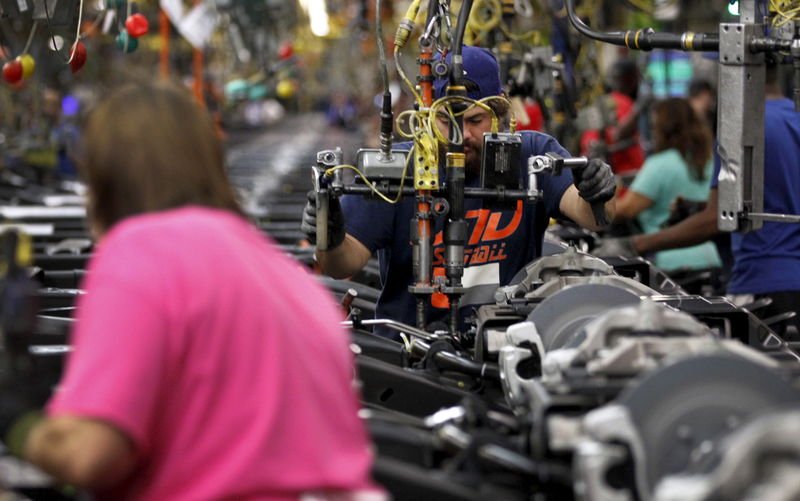By Lucia Mutikani
WASHINGTON (Reuters) - U.S. industrial output advanced at its strongest pace in eight months in July as auto production surged, another bullish sign for third-quarter economic growth that boosts the prospects of a Federal Reserve interest rate hike next month.
While other data on Friday showed a dip in consumer sentiment early this month, households were upbeat about their personal finances, a good omen for consumer spending. July employment and retail sales data also struck an optimistic note on the economy.
"It adds to the steady drum-beat of solid indicators that suggest the economy is getting off to a much better start in the second half of the year and further increases the odds towards a September rate hike by the Fed," said Sal Guatieri, a senior economist at BMO Capital Markets in Toronto.
Industrial production shot up 0.6 percent last month after a downwardly revised increase of 0.1 percent in June, the Fed said. Economists polled by Reuters had looked for a rise of 0.3 percent in July.
The gain in output reflected a 0.8 percent increase in factory production that was spurred by a 10.6 percent surge in motor vehicle output, the largest increase since September 2009.
Auto manufacturers typically shut down production lines in summer for retooling, but economists speculated they probably had done so for only a short period, leading to the jump in vehicle production. Apart from autos, manufacturing rose 0.1 percent last month.
Mining production edged up 0.2 percent as oil and gas well drilling output grew for the first time in 10 months, suggesting the energy sector was starting to stabilise after being undermined by last year's plunge in crude oil prices.
Despite the surge in July, industrial production remains constrained by a strong dollar and lower oil prices.
"We continue to see a stronger dollar and lower energy prices as posing headwinds for industrial output and do not look for a strong rebound in the sector this year," said Jesse Hurwitz, an economist at Barclays (LONDON:BARC) in New York.
U.S. stocks were trading marginally higher, while the dollar was little changed against a basket of currencies. Prices for U.S. government debt fell.
BENIGN INFLATION OUTLOOK
In a separate report, the University of Michigan said its consumer sentiment index slipped to 92.9 in early August from a reading of 93.1 in July. Still, it was the highest nine-month average since 2004 and consistent with a 3 percent annualised rate of increase in consumer spending.
The Labor Department also reported on Friday that its producer price index for final demand increased 0.2 percent last month as the cost of services rose. The PPI gained 0.4 percent in June.
In the 12 months through July, the PPI fell 0.8 percent after declining 0.7 percent in June. It was the sixth straight 12-month decrease in the index.
But inflation pressures are likely to remain benign due to the strong dollar, falling oil prices and China's recent devaluation of its currency. Inflation has been persistently running below the Fed's 2 percent target.
"Looking ahead there appears to be further downward price pressure in the pipeline as a result of slowing global demand, and of course the recent devaluation of the yuan is likely to only exacerbate that pressure on commodity prices," said Lindsey Piegza, chief economist at Stifel Fixed Income in Chicago.
The volatile trade services component, which mostly reflects profit margins at retailers and wholesalers, rose 0.4 percent in July after increasing 0.2 percent in the prior month.

A key measure of underlying producer price pressures that excludes food, energy and trade services rose 0.2 percent last month after increasing 0.3 percent in June. The so-called core PPI was up 0.9 percent in the 12 months through July.